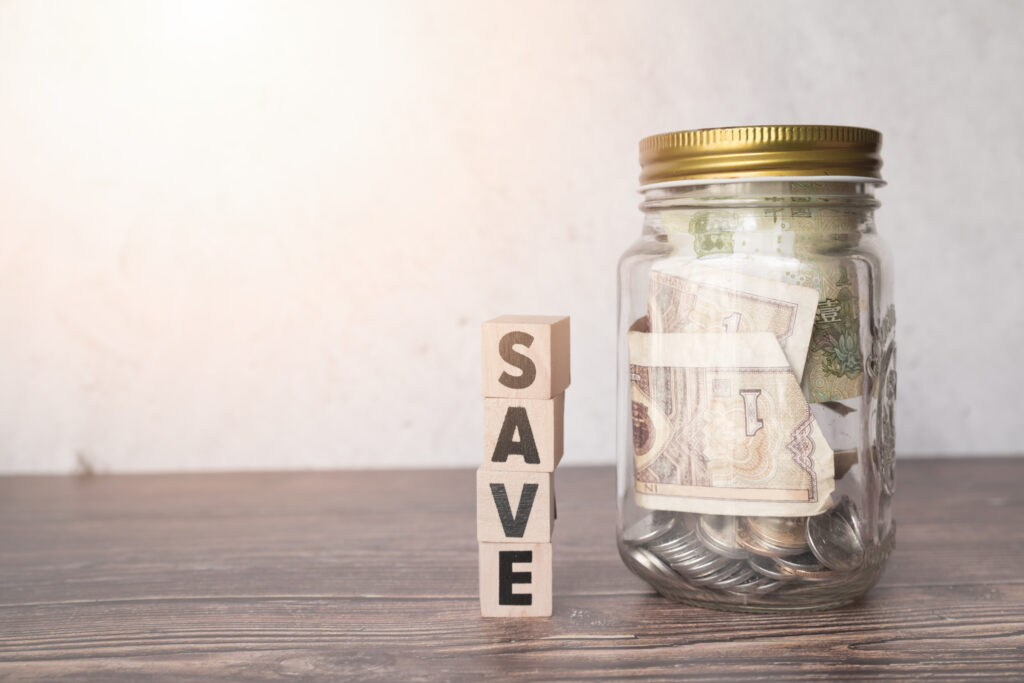by Rhyll Neri, Correspondent
So you just got your monthly take-home pay: ₱15,000. You feel both excited (“Finally, my own money!”) and stressed (“How can I possibly stretch this and still save something?”). The good news is, you actually can!
If you’re new to corporate work, just starting out, or dealing with the rising cost of living in the Philippines, this guide is for you. It’s also for the many beginners asking: how to save ₱15,000 in one month — or at least how to make that amount last so you don’t end up penniless by the 20th.
If you’ve been wondering how to save ₱15,000 in one month, this guide is for you.

Here’s the roadmap:
- Build a budget that reflects Philippine realities
- Implement smart, doable habits to save without feeling deprived
- Use tools and psychological hacks to stay consistent
- End with a template you can adapt to your own life
By the end, you’ll have a realistic, human plan to save money Philippines-style, even with ₱15,000.
How to save ₱15,000 in one month: Know your reality (and why it matters)
Before you ask how to save ₱15,000, you first need to understand what your real expenses are.
1. Track every Peso you spend
For one full month, write down every expense — from jeep rides to junk food to those ₱20 snacks. Yes, even that “tambay” coffee.
Why? Because you can’t optimize what you don’t measure. Many Filipino finance guides emphasize that listing expenses helps uncover the “leaks” in your budget.
After a few weeks, you’ll start to see patterns: “Wow, I really spend ₱150 a day on snacks,” or “My commuting costs are eating half my budget.”
2. Differentiate needs vs. wants
This one’s classic but essential: needs = rent, food, transport, basic utilities; wants = eating out, streaming subscriptions, gadgets.
Financial planners in the Philippines often cite the 50-20-30 rule — 50% for needs, 20% for savings, and 30% for wants.
With ₱15,000, your “needs” might already consume too much. That’s okay; the trick is squeezing, trimming, or even pausing some of your wants temporarily.
Building a Pinoy-friendly budget plan

Your goal: maximize what you can save out of ₱15,000. You might not hit ₱15,000 saved (that’s unlikely unless all expenses are zero), but you can aim to save something meaningful and strengthen your money muscles.
1. Set your savings target (Don’t wait for “leftovers”).
If you leave saving for the “leftovers,” you’ll usually have nothing left. Instead, follow the “pay yourself first” rule: the moment your salary arrives, transfer a fixed amount to your savings before paying bills or shopping.
Given ₱15,000, a realistic starting target is ₱1,500 to ₱3,000 (10–20%) for that month. If you can go higher, great — but don’t overdo it. Start sustainable.
2. Use a practical budget split.
Here’s one possible split (you can adapt as needed):
| Category | % of Salary | Amount (₱15,000) | Comments |
| Essentials / Needs | 55–60% | ₱8,250 – ₱9,000 | Rent, utilities, groceries, transport |
| Savings | 10–20% | ₱1,500 – ₱3,000 | Emergency fund, “stash away” |
| Wants / Flex | 10–20% | ₱1,500 – ₱3,000 | Treats, subscriptions, social |
| Buffer / Misc | 5–10% | ₱750 – ₱1,500 | Unexpected costs |
If your essentials already take up 80% or more, you’ll need to cut wants or adjust aggressively, or even find ways to reduce essentials (like cheaper commuting). The key is realism, not perfection.
You could also try the 80/20 rule: 20% goes to savings, 80% to everything else.
3. Envelope or “Jar” method (physical or digital)
This method is well-loved in the Philippines. You allocate cash (or virtual “envelopes”) for categories like food, transport, or personal expenses. Once the “food envelope” is empty, you stop buying.
BPI and other local banks recommend this kind of envelope budgeting for better visual control.
You can combine it with apps — some allow you to digitally separate your accounts so you don’t accidentally dip into savings.
Pinoy-proven habits to save big (without feeling starved)

These are the daily or weekly habits you can adopt to live on ₱15,000 and still make progress.
1. Cook and bring baon (packed lunch)
One of the easiest, lowest-hanging fruits. Eating out daily kills your budget. Many local money-saving guides say bringing your own lunch can dramatically cut costs. Even simple rice + ulam + veggies can cost between ₱50 – ₱80 in a carinderia, instead of ₱150 – ₱200 in a mall food stall.
2. Bulk-cook, stretch your meals
Cook in batches. If you cook adobo, sinigang, or monggo in bulk, you stretch volume and reduce prep time. Use ingredients that can be repurposed (e.g., leftover adobo for fried rice the next day). This is often the advice you can see in “Pinoy money hacks” articles.
3. Be grocery smart: Palengke, sale days, generic brands
- Buy fresh fruits and vegetables at the palengke (wet market), where prices are often lower.
- Take advantage of sale days and discounted items nearing expiry (if still safe).
- Opt for generic instead of branded items (e.g., detergent, rice brands).
- Buy nonperishable goods in bulk when prices dip.
- Use vouchers, coupons, and loyalty programs whenever possible.
4. Slash utility and recurring subscription costs
- Unplug appliances when idle (phantom power drains).
- Use LED bulbs, natural light, and ventilation.
- Fix leaks, reduce water waste.
- Review your subscriptions (Spotify, Netflix, mobile data). Cancel or downgrade the ones you rarely use.
- Switch to cheaper prepaid or load plans if possible.
Many Filipino guides stress “thinking twice before shopping” and “learn to say ‘no’ to unnecessary expenses.”
5. Use public transport, carpool, or walk
If you’re commuting, see if there’s a cheaper route or combine rides with co-workers. Sometimes, even shifting to a farther but cheaper place can reduce rent + transport overall.
6. Observe “no-spend” or “low-spend” days or weeks
Designate 1–2 days a week where you spend nothing (or minimal). Use free recreation—walks, public parks, movies at home, borrow books. The “no-spend challenge” forces creativity.
7. Automate savings and use digital tools
Set an automatic transfer to your savings account once your salary comes in. A number of banking guides would recommend automation so you “don’t feel it.” Use apps or spreadsheets to track your budget — consistency, after all, always beats perfection.
8. Get a side income or micro hustle
₱15,000 can be tight. Consider a small side gig: selling baked goods, doing freelance tasks, or reselling items. Even an extra ₱500 to ₱1,000 helps — just don’t burn yourself out.
Setting a realistic example: Living on ₱15,000

Here’s a mock sample month for someone in the provinces (so rent is lower) to show how it could play out.
| Category | Budget | Notes |
| Rent (shared room) | ₱3,000 | Could be lower in many provinces |
| Utilities & Internet | ₱800 | Electricity, water, basic internet |
| Groceries / Food | ₱3,000 | Cooking home, smart shopping |
| Transport | ₱1,200 | Jeep, tricycle, walking |
| Communication / Mobile / Load | ₱500 | Prepaid load, data |
| Personal / Hygiene / Misc | ₱700 | Toiletries, small needs |
| Entertainment / Social / Treats | ₱500 | Minimal |
| Buffer / Emergency | ₱300 | For surprise costs |
| Savings | ₱4,000 (~26.7%) | Ambitious but doable |
Yes, that’s aggressive — it’ll feel tight, but it’s possible. Adjust as needed (e.g., reduce your buffer for higher savings, or find cheaper rent).
Every peso counts. Once you get paid, instantly move ₱4,000 to your savings account or envelope, and live on the remaining ₱11,000.
Even if you can only save ₱1,500–₱2,000, that’s progress. Habit-building matters more than perfection.
Overcoming psychological hurdles
Saving is as much mental as it is mathematical. Here’s how to stay motivated.
1. Make it emotional and visual
- Create a goal: “₱20,000 emergency fund,” “₱5,000 for a phone.”
- Use a savings tracker (chart, jar, app).
- Celebrate small wins (after you hit ₱500, ₱1,000).
Humans respond to narratives. Tell yourself: “I’m building financial freedom one peso at a time.”
2. Use “cool-down” periods for impulse buys
Have a 7-day or 30-day rule: when you want something, wait. If you still want it after the cool-down period, then consider buying. This keeps impulses in check.
3. Avoid comparison traps and social pressure
Your officemates may flaunt gadgets or eat out often. Don’t compare. Saving is personal. Also, avoid “luxury signaling” — buying things just to impress others.
4. Accountability and buddy system
Tell a friend or family member about your goal. Better yet, find a saving buddy and track progress together. Social accountability works wonders.
5. Accept imperfection and adjust
There will be slip-ups — an unexpected expense, an emergency. Don’t quit. Instead: review, adjust, recommit. Over time, you’ll get better.
Scaling forward beyond month one
Once you nail one 30-day cycle, you can level up.
1. Increase savings gradually
Aim to raise your savings rate month by month (e.g. +1–2%). Even going from ₱2,000 → ₱2,500 → ₱3,000 helps build momentum.
2. Build an emergency fund
Goal: 3–6 months’ worth of expenses. This helps avoid using salary for crisis. Finance training resources in PH often stress this.
3. Consider low-risk investments
Once your emergency fund is stable, look into safe instruments: time deposits, aggressive savings accounts, or low-risk mutual funds. Sites like Maya and BPI offer options for higher yields in PH.
4. Increase your income and upskill
Saving more is hard with fixed pay. Try boosting your income via:
- Freelance / side hustles
- Taking on overtime or extra projects
- Gaining certifications to improve your regular job pay
With more income, your “needs” take smaller share, giving more room for savings.
Conclusion
Learning how to save 15,000 pesos in one month is really about learning how to budget, respect your money, and build discipline. Starting with ₱15,000 is far from a disadvantage; you just need sharper strategies.
Your mission (if you accept it):
- Track every peso this month
- Decide a realistic savings target (≥₱1,500)
- Automate transfer the moment you receive your pay
- Use the hacks above every day
- Review at month’s end, celebrate progress, adjust
If you consistently do this for 3–6 months, you’ll see not only a fatter bank balance, but a confidence shift. And when you can save ₱15,000 in a month? That’ll be your next goal.
⚠️ Disclaimer
The information in this article is for educational and informational purposes only. It does not constitute financial, investment, or professional advice. The tips and examples provided are based on general budgeting principles and common practices in the Philippines and may not apply to every individual’s situation.
Readers are encouraged to assess their own financial circumstances or consult a licensed financial advisor before making any major money decisions. The author and publisher are not liable for any financial loss or decisions made based on the content of this article.








